Abstract
OBJECTIVE. This study examines the formation of local hospital systems (LHSs) in urban markets by the end of 1992. We argue that a primary reason why hospitals join LHSs is to achieve improved positions of market power relative to threatening rivals. DATA SOURCES/DATA COLLECTION. The study draws from a unique database of LHSs located in and around metropolitan statistical areas (MSAs). Data were obtained from the 1991 AHA Annual Hospital Survey, updated to the year 1992 using information obtained from multiple sources (telephone contacts of systems, systems lists of hospitals, published changes in ownership, etc.). Other measures were obtained from a variety of sources, principally the 1989 Area Resources File. STUDY DESIGN. The study presents cross-sectional analyses of rival threats and other factors bearing on LHS formation. Three characteristics of LHS formation are examined: LHS penetration of urban areas, LHS size, and number of LHS members located just outside the urban boundaries. LHS penetration is analyzed across urban markets, and LHS size and rural partners are examined across the LHSs. PRINCIPAL FINDINGS. Major hypothesized findings are: (1) with the exception of the number of rural partners, all dependent variables are positively associated with the number of hospitals in the markets; the rural partner measure is negatively associated with the number of hospitals; (2) the number of doctors per capita is positively associated with all but the rural penetration measure; and (3) the percentage of the population in HMOs is positively associated with local cluster penetration and negatively associated with rural system partners. Other findings: (1) average income in the markets is negatively associated with all but the rural penetration measure; (2) LHS size and rural partners are both positively associated with nonprofit system ownership; and (3) they are also both negatively associated with the degree to which their multihospital systems are geographically concentrated in a single state. CONCLUSIONS. The findings generally support the argument that LHS formation is the product of hospital providers attempting to improve positions of power in their local markets.
Full text
PDF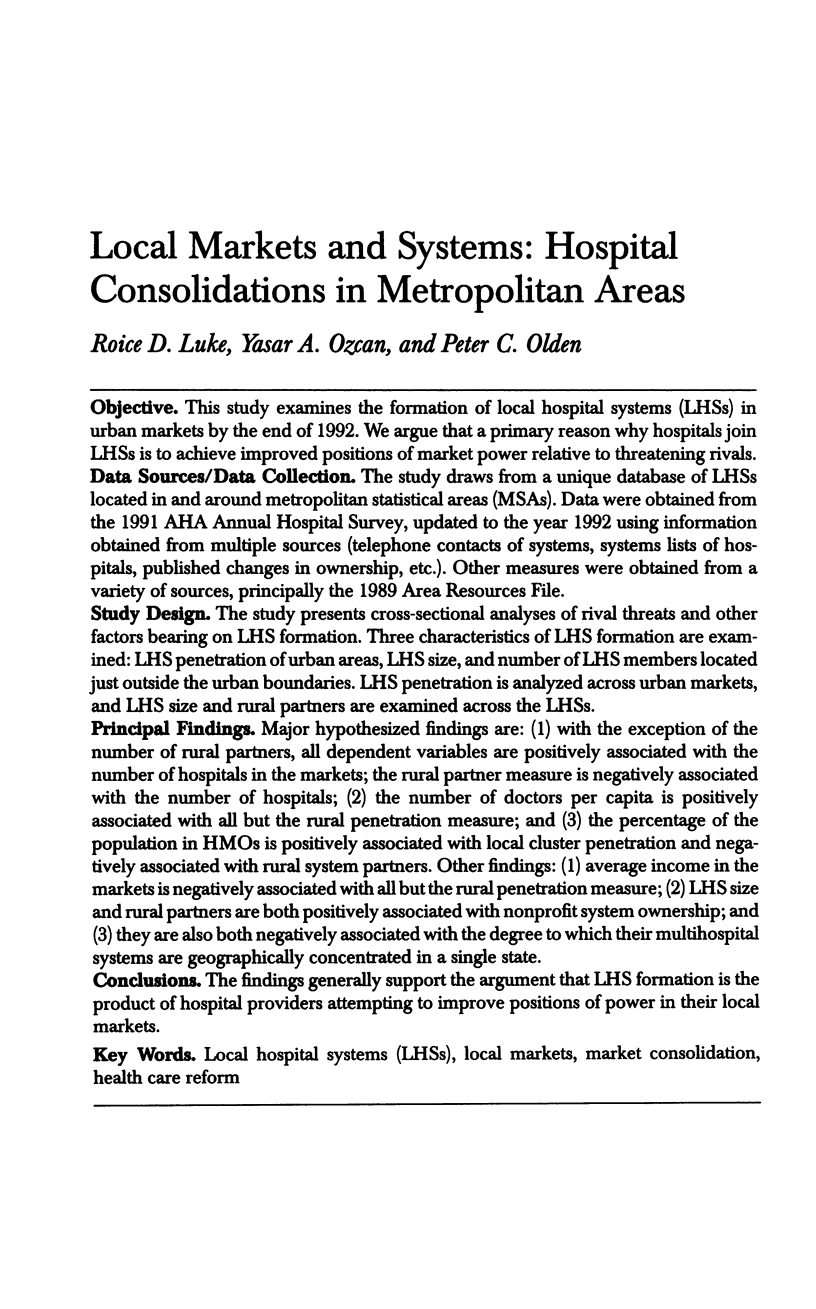
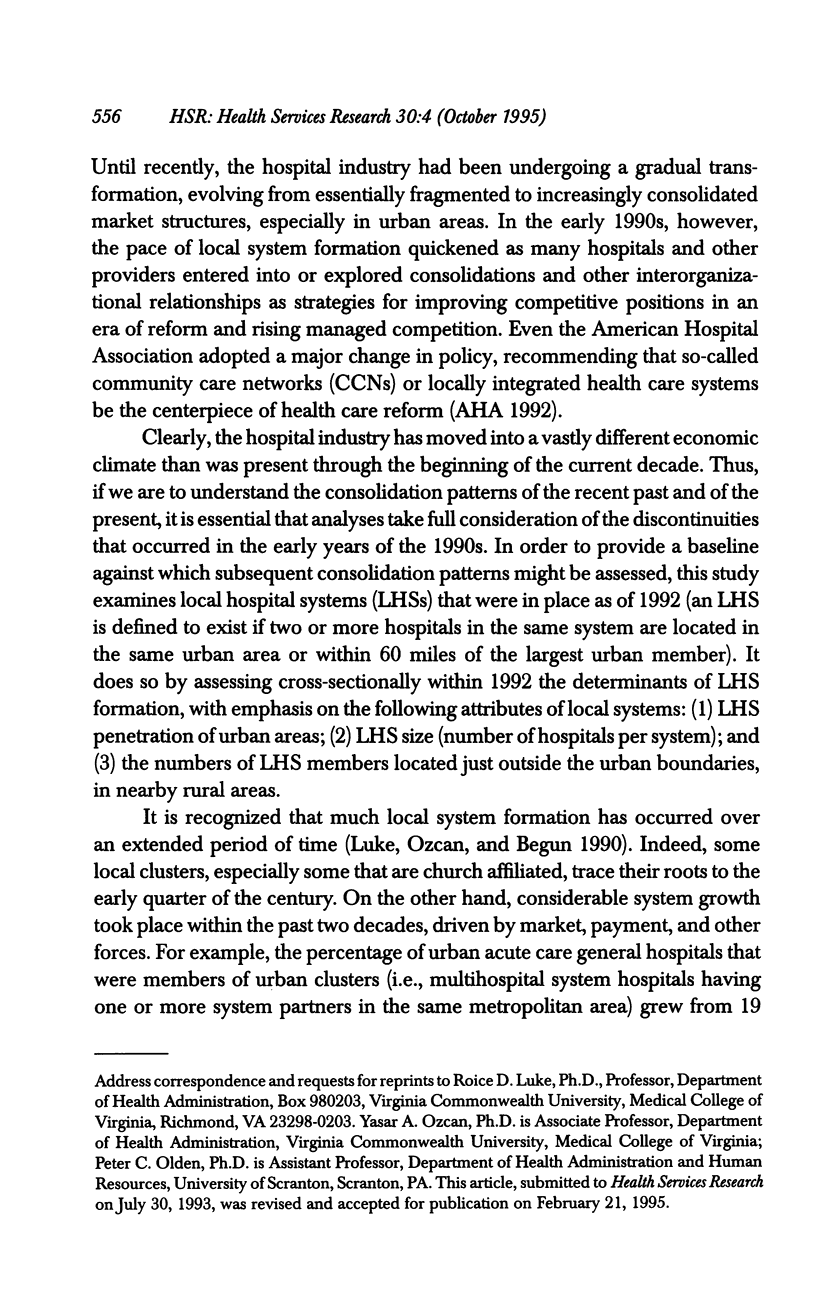
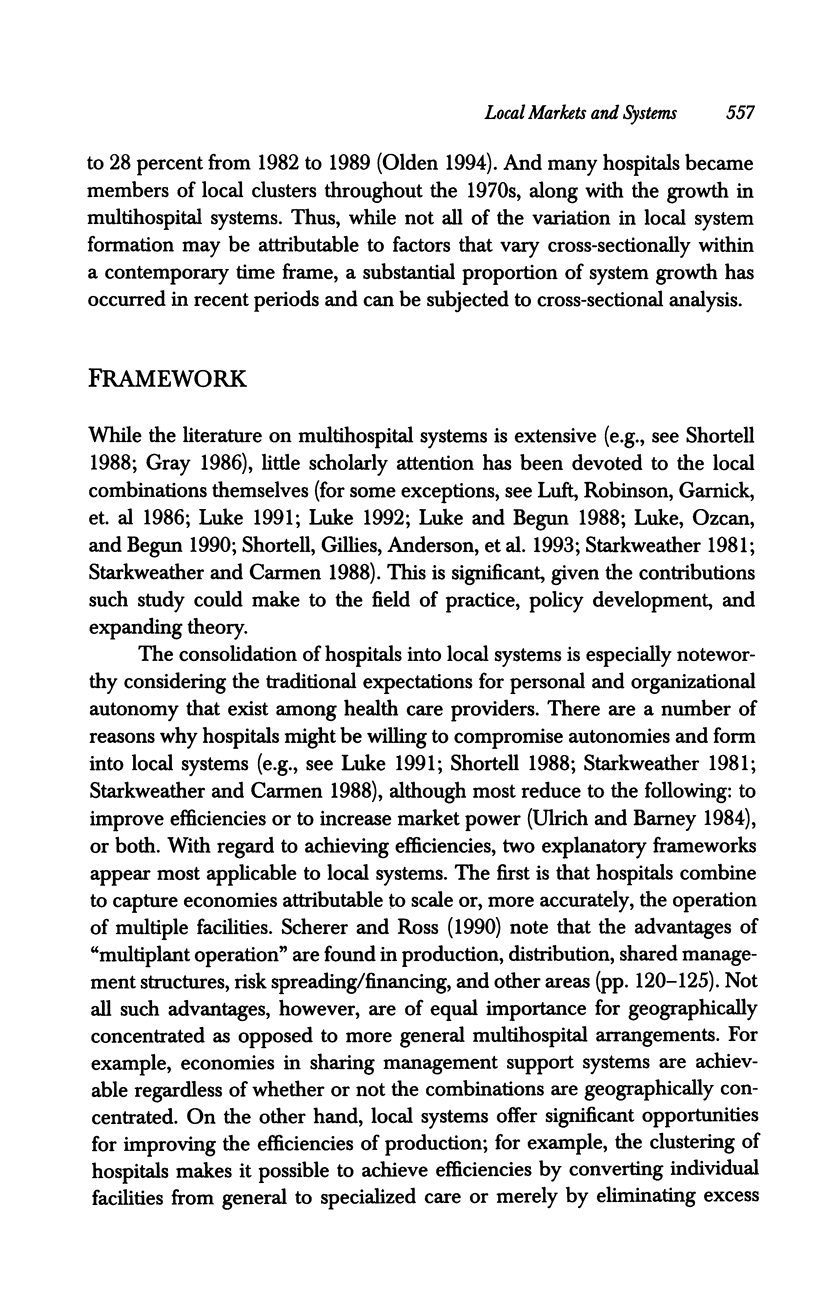
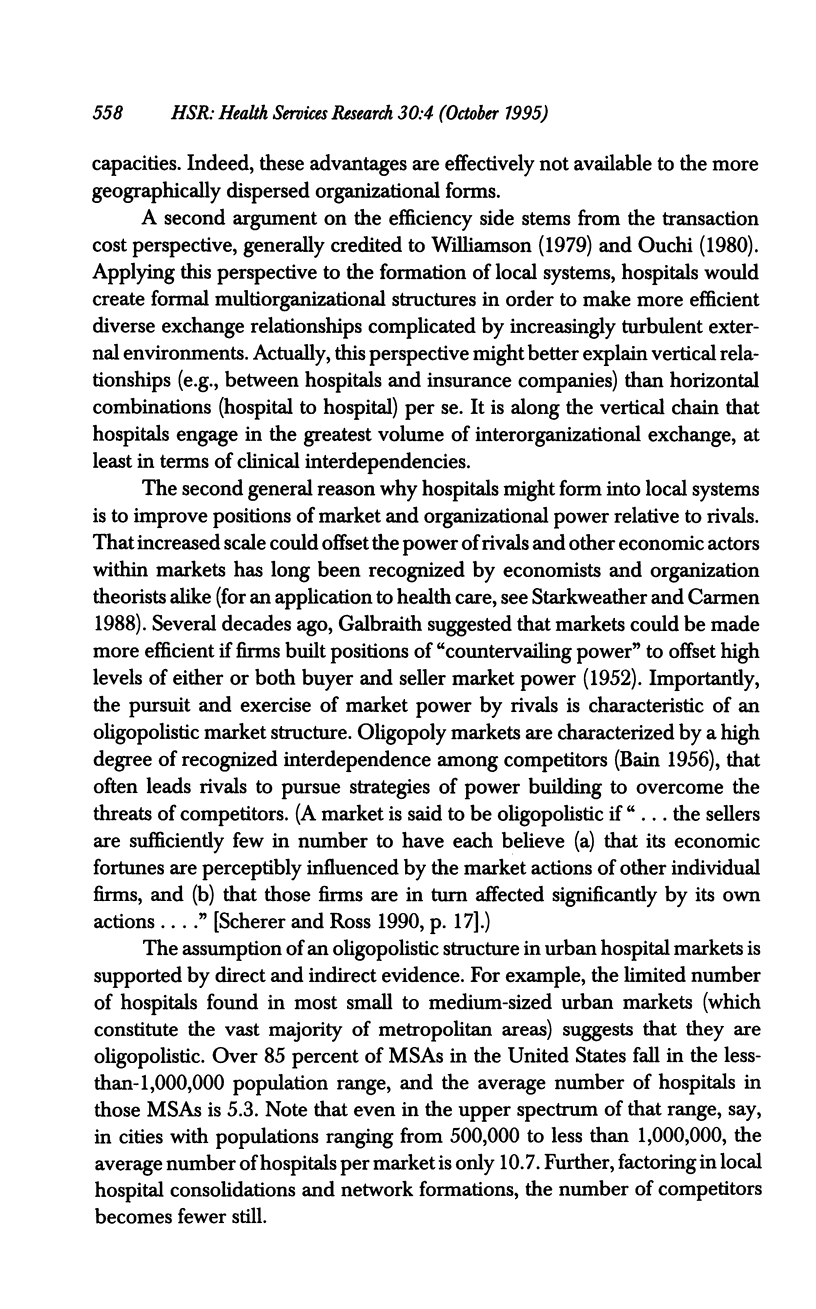
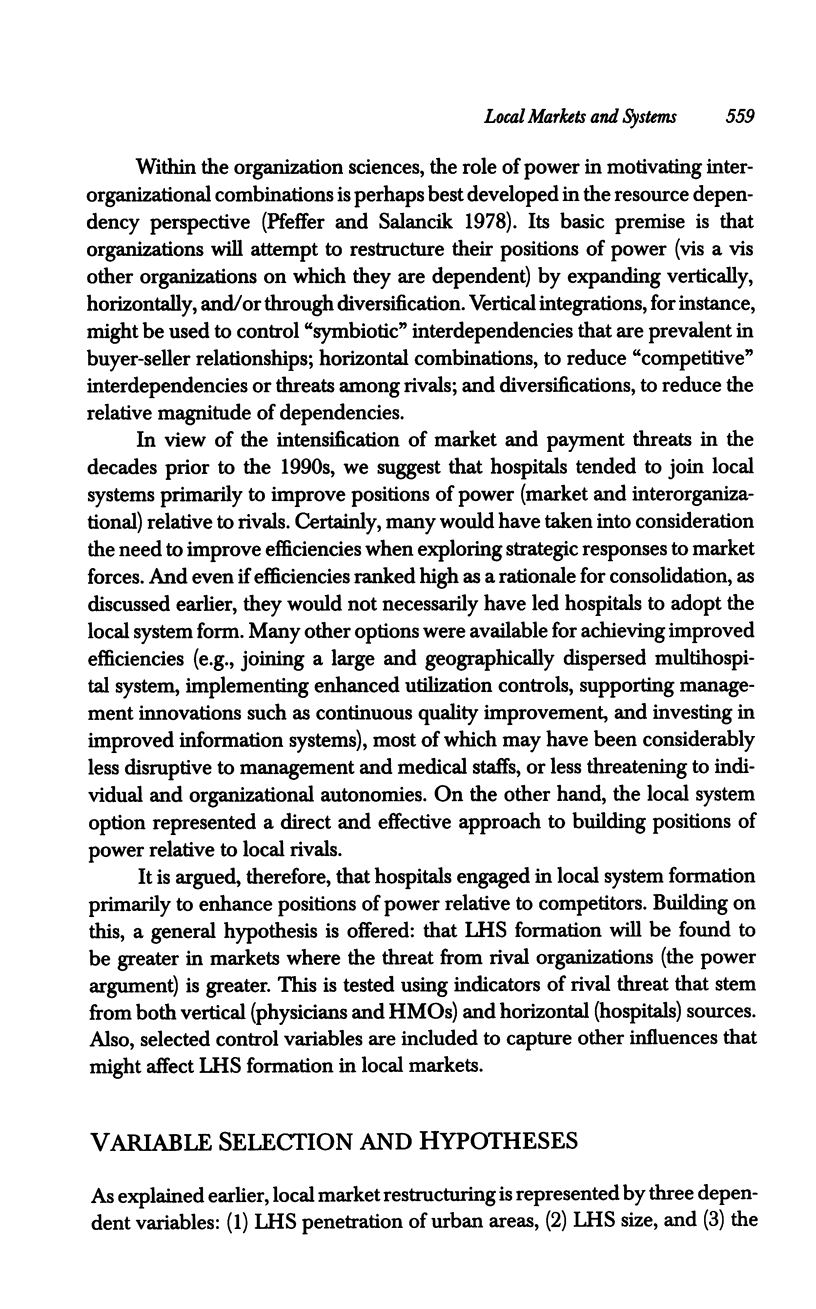
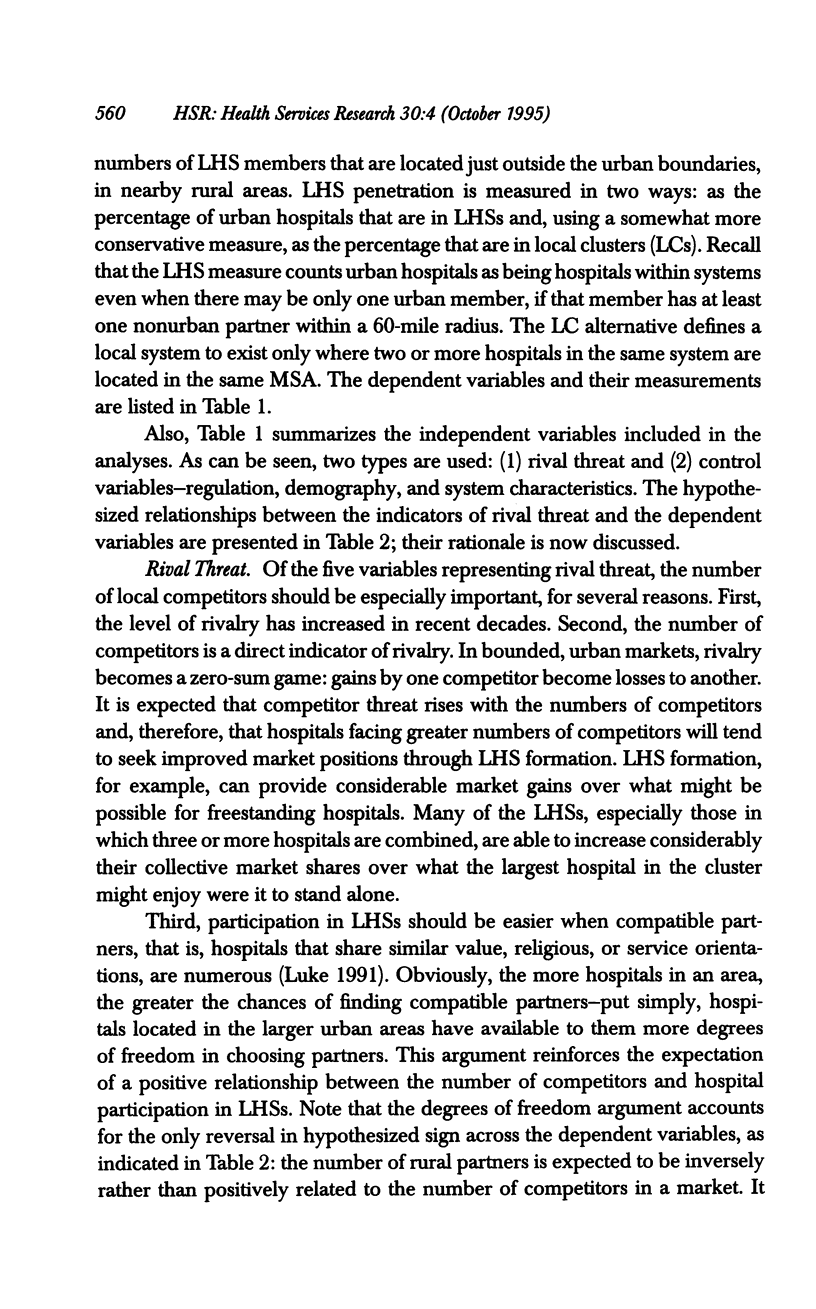

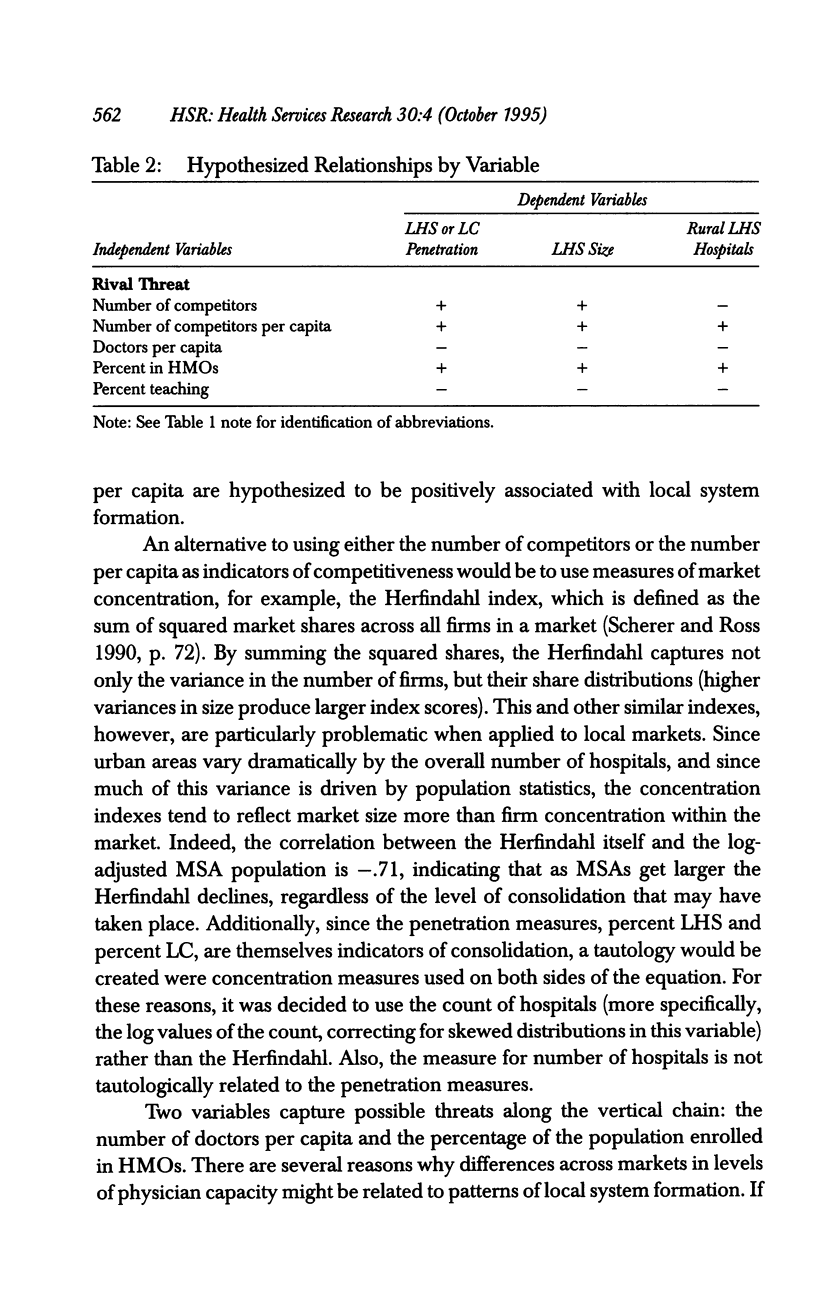
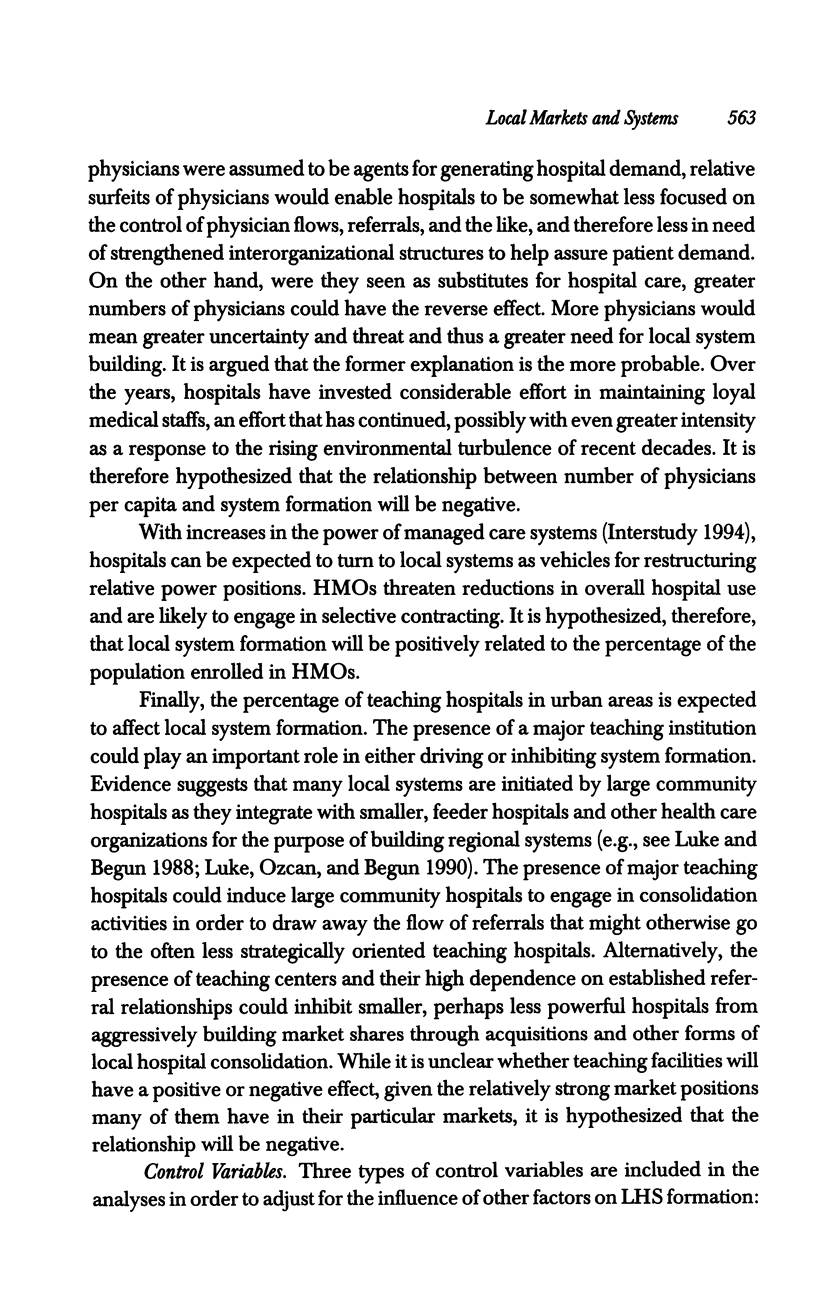

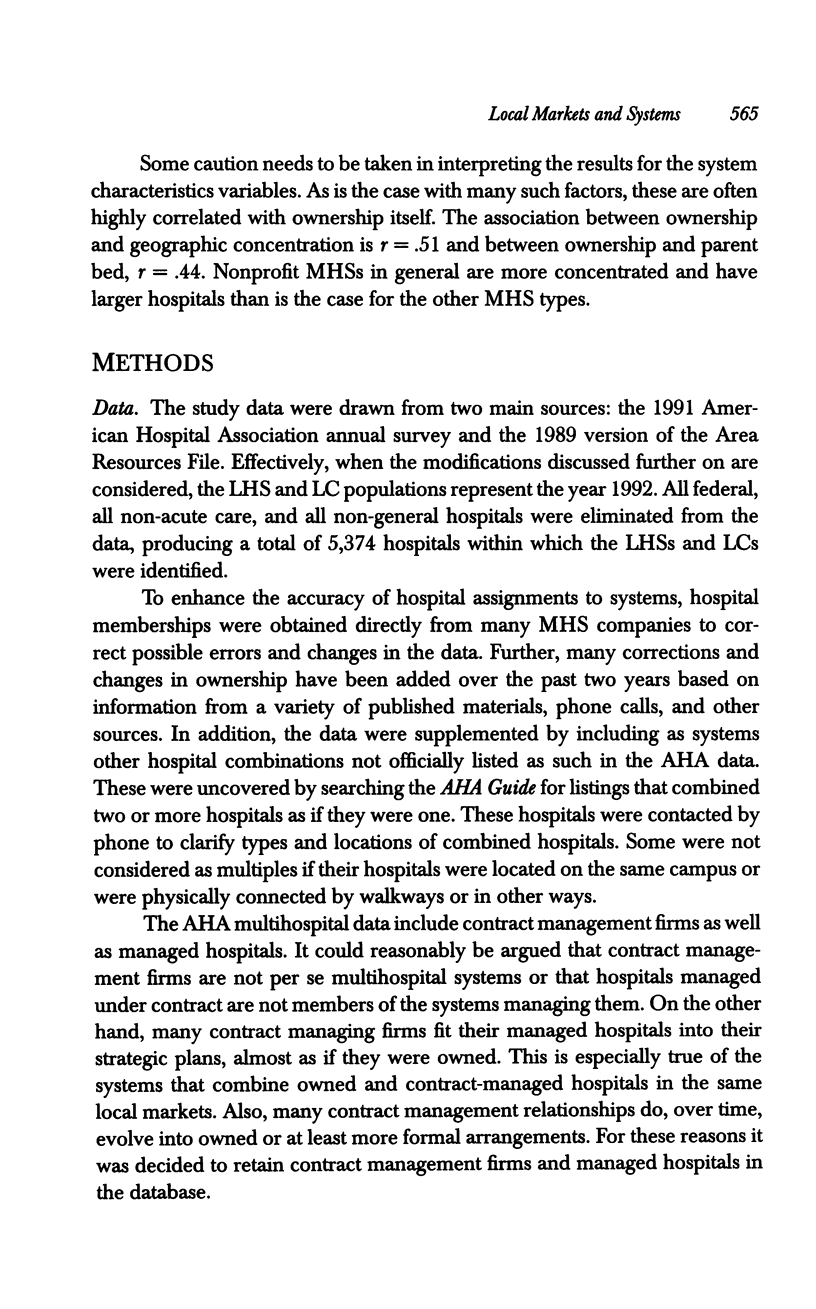
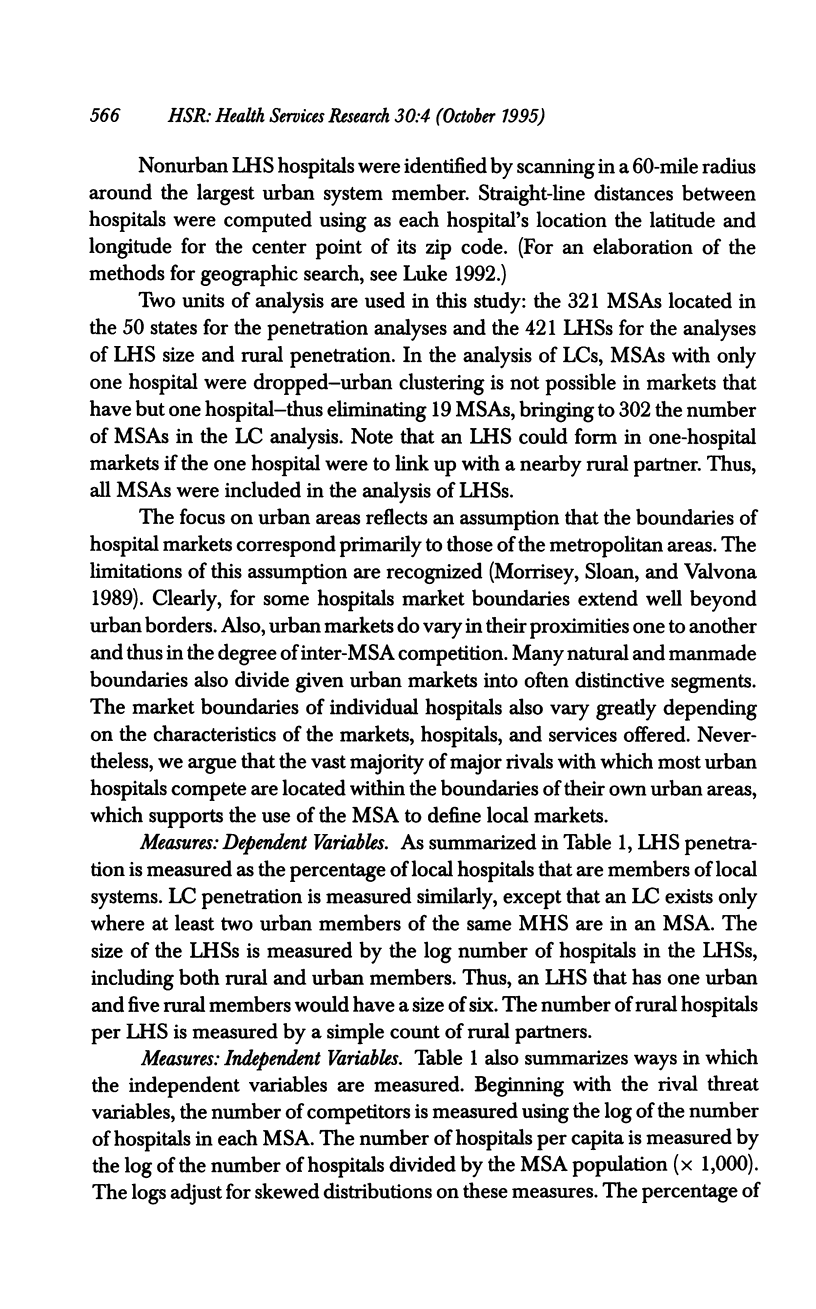
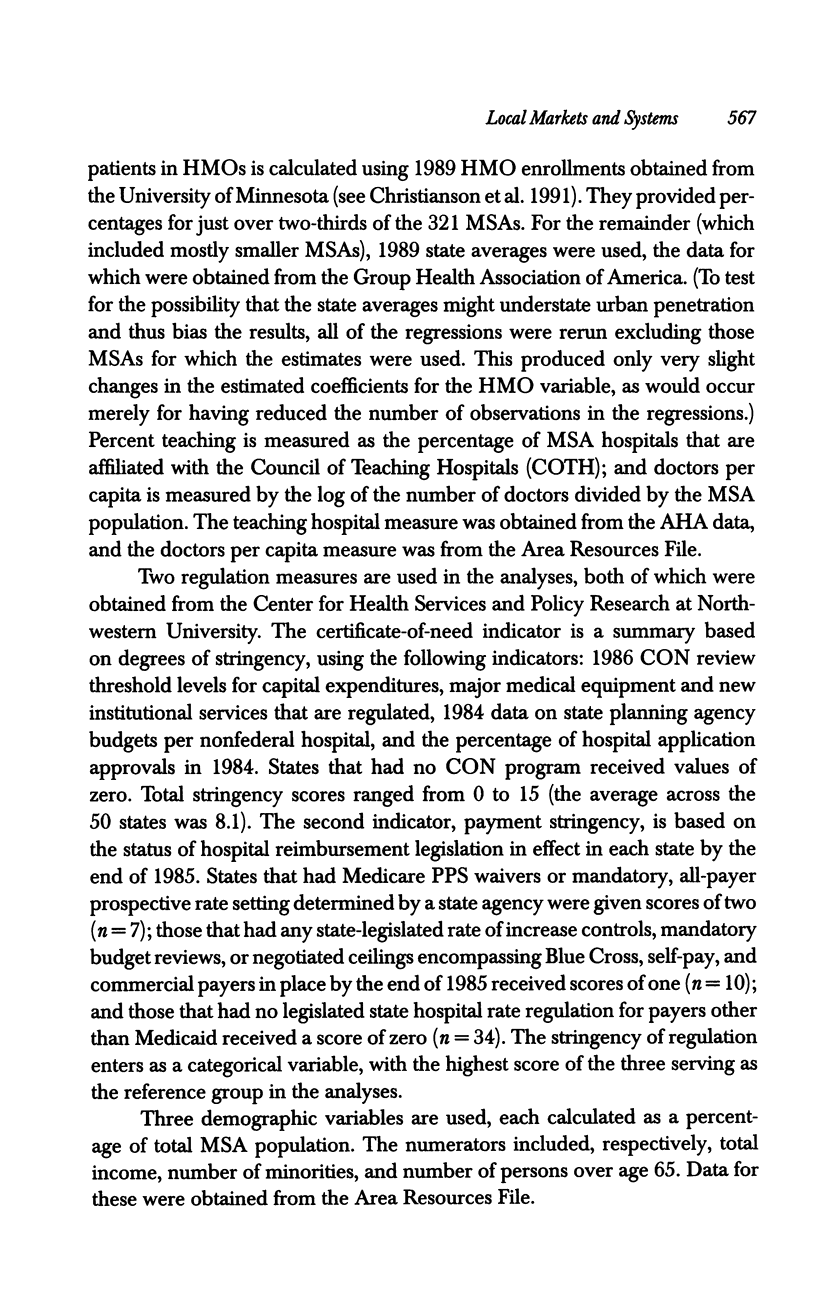
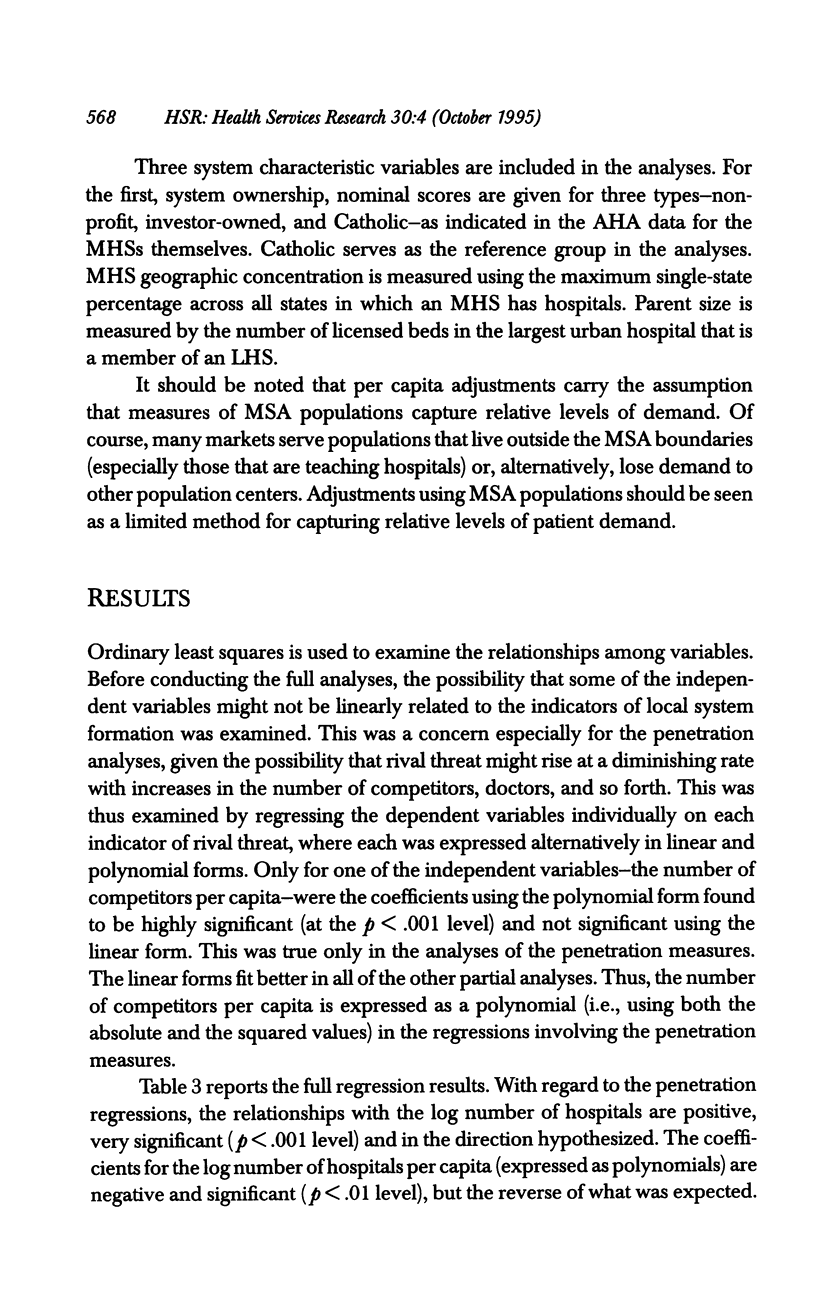
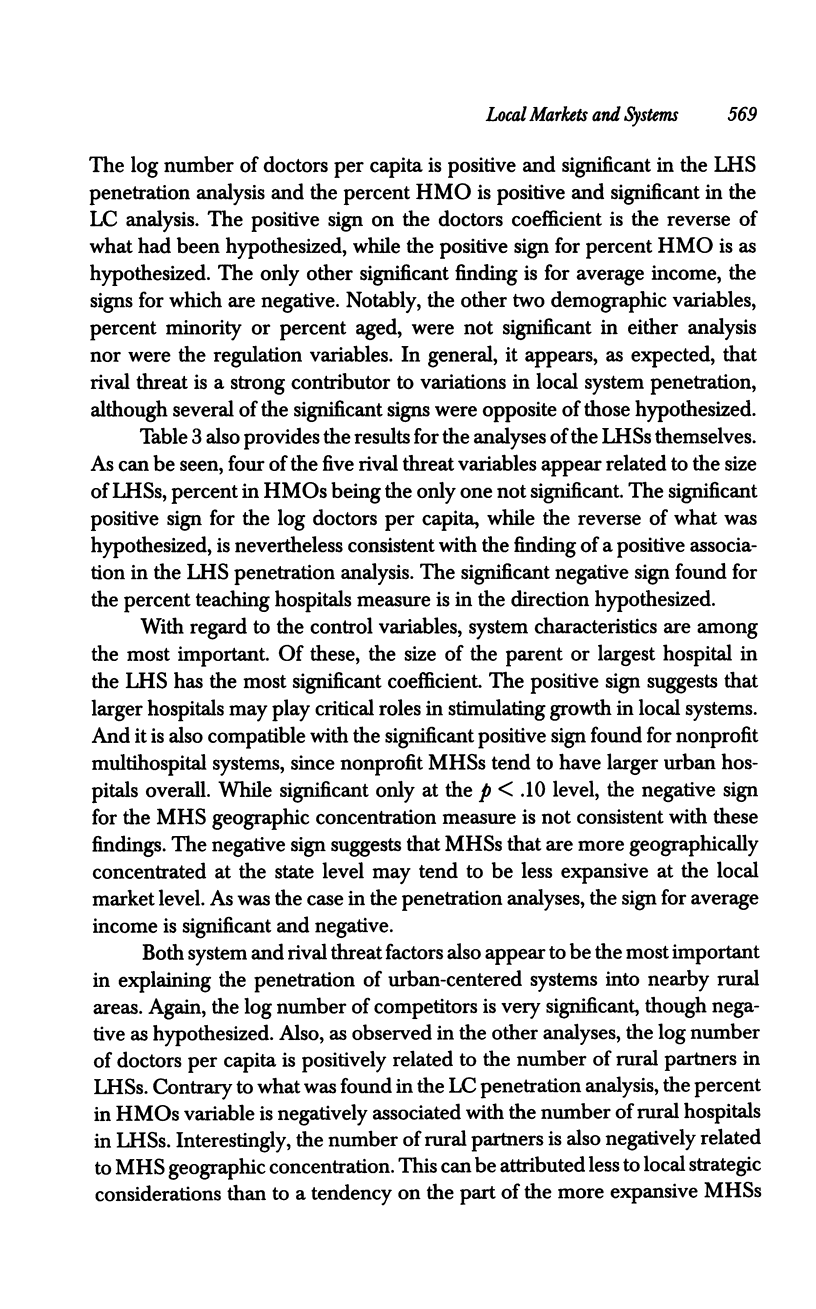


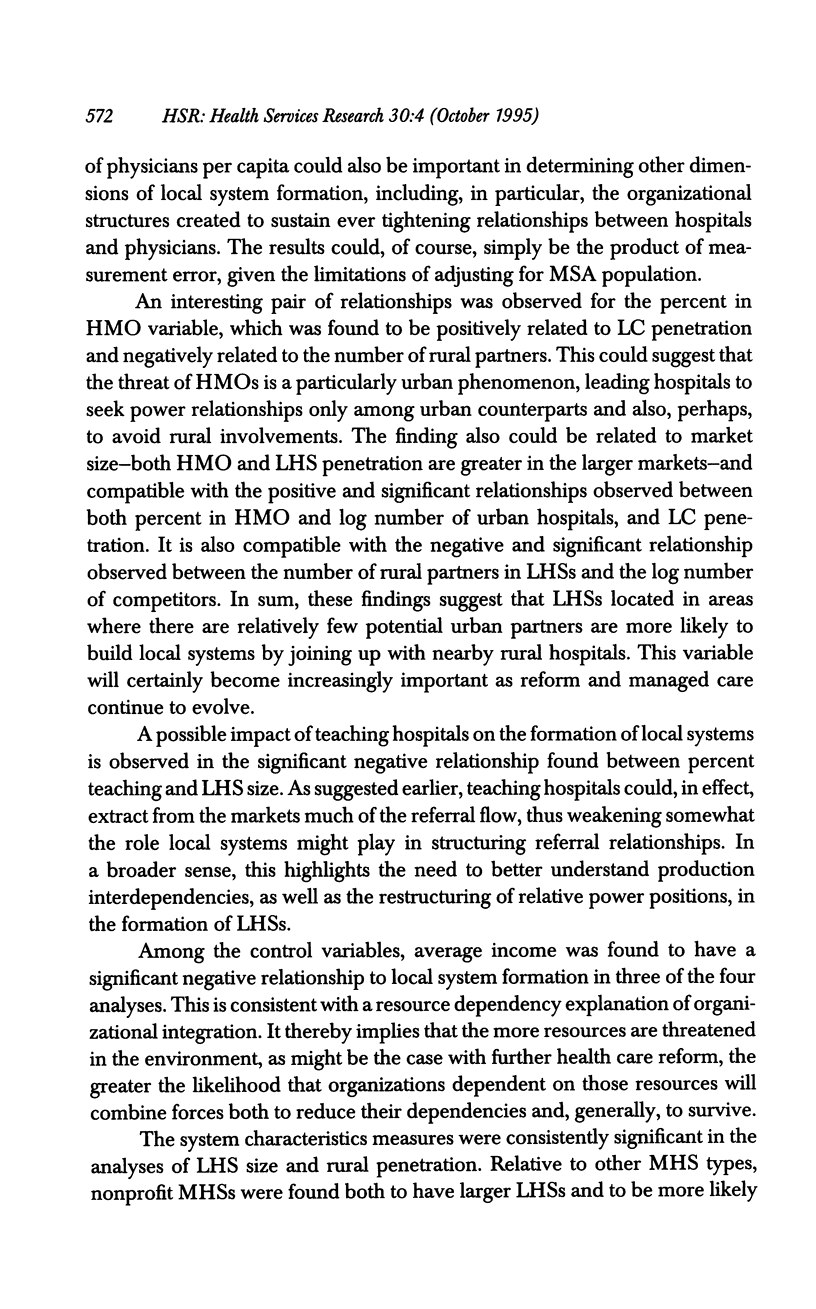
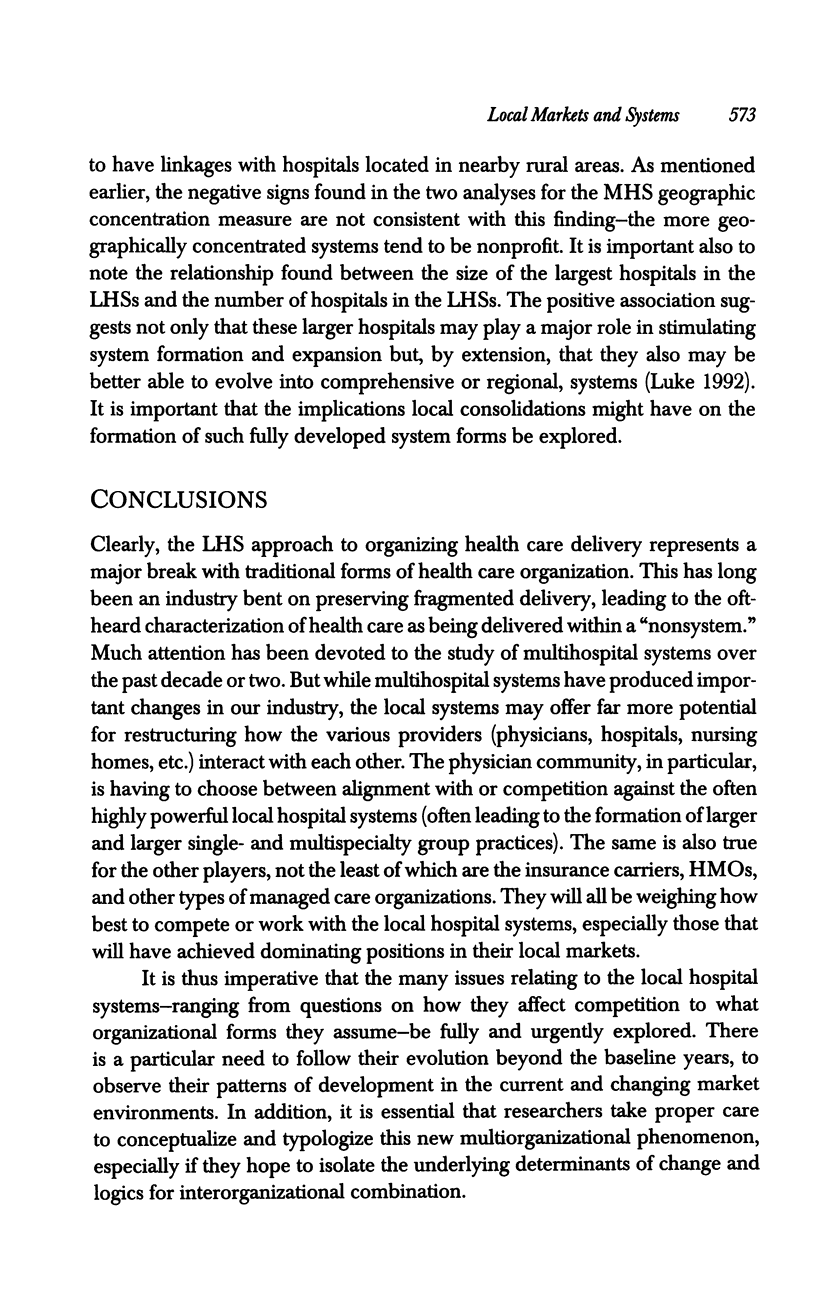
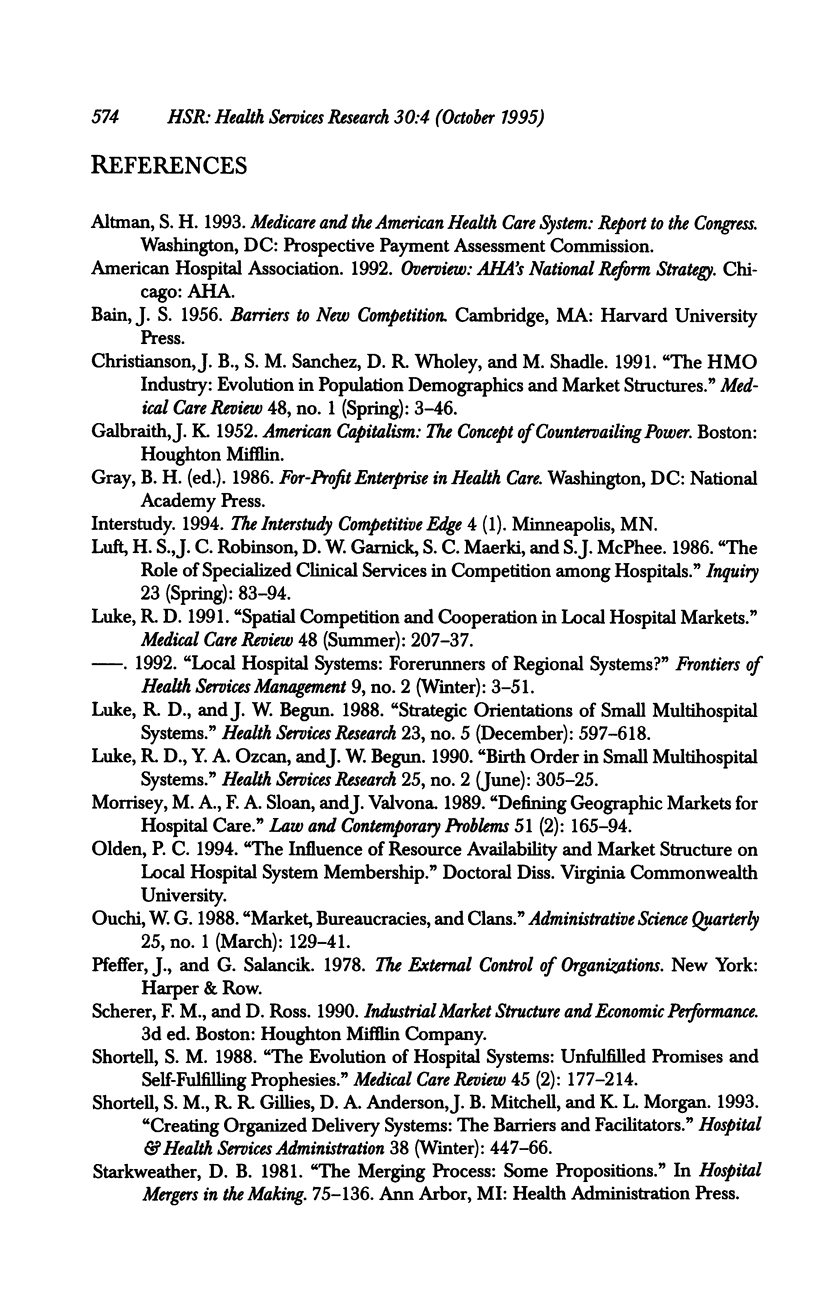

Selected References
These references are in PubMed. This may not be the complete list of references from this article.
- Christianson J. B., Sanchez S. M., Wholey D. R., Shadle M. The HMO industry: evolution in population demographics and market structures. Med Care Rev. 1991 Spring;48(1):3–46. doi: 10.1177/002570879104800102. [DOI] [PubMed] [Google Scholar]
- Luft H. S., Robinson J. C., Garnick D. W., Maerki S. C., McPhee S. J. The role of specialized clinical services in competition among hospitals. Inquiry. 1986 Spring;23(1):83–94. [PubMed] [Google Scholar]
- Luke R. D., Begun J. W. Strategic orientations of small multihospital systems. Health Serv Res. 1988 Dec;23(5):597–618. [PMC free article] [PubMed] [Google Scholar]
- Luke R. D., Ozcan Y. A., Begun J. W. Birth order in small multihospital systems. Health Serv Res. 1990 Jun;25(2):305–325. [PMC free article] [PubMed] [Google Scholar]
- Luke R. D. Spatial competition and cooperation in local hospital markets. Med Care Rev. 1991 Summer;48(2):207–237. doi: 10.1177/002570879104800204. [DOI] [PubMed] [Google Scholar]
- Morrisey M. A., Sloan F. A., Valvona J. Defining geographic markets for hospital care. Law Contemp Probl. 1988 Spring;51(2):165–194. [PubMed] [Google Scholar]
- Shortell S. M., Gillies R. R., Anderson D. A., Mitchell J. B., Morgan K. L. Creating organized delivery systems: the barriers and facilitators. Hosp Health Serv Adm. 1993 Winter;38(4):447–466. [PubMed] [Google Scholar]
- Shortell S. M. The evolution of hospital systems: unfulfilled promises and self-fulfilling prophesies. Med Care Rev. 1988 Fall;45(2):177–214. doi: 10.1177/107755878804500202. [DOI] [PubMed] [Google Scholar]


